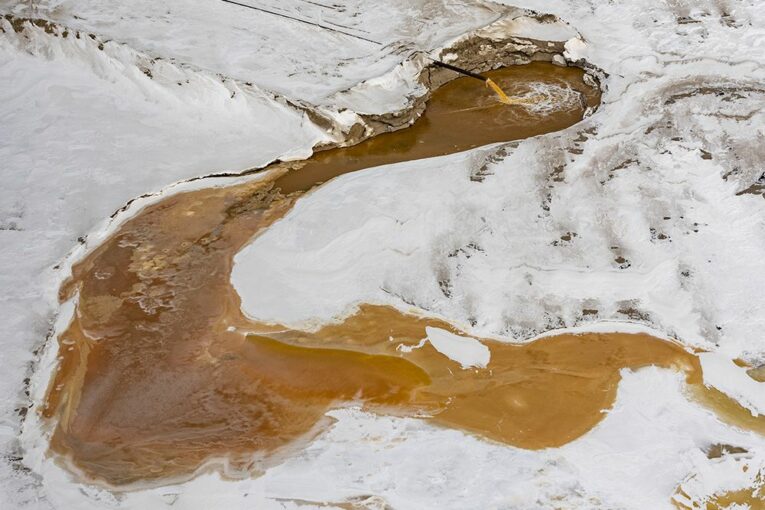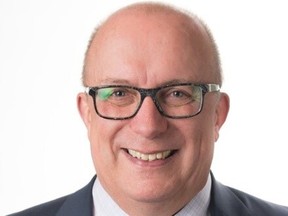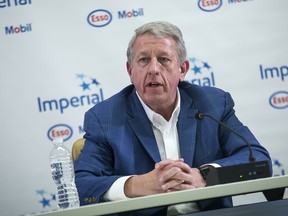
The head of the Alberta Energy Regulator (AER) says it was Imperial Oil’s responsibility to notify nearby communities about seepage and a spill of industrial wastewater at the Kearl oilsands mine — but Laurie Pushor apologized for the communication shortcomings by his agency.
It’s the second set of apologies issued at parliamentary hearings in Ottawa, made to Indigenous communities located near the oilsands mine that were unaware for months about the wastewater seeping at the site last year.
After three hearings by the committee in the past week, it’s apparent the regulator has plenty of work to do to rebuild confidence from affected communities in northern Alberta — something it committed to.
“It is clear that neither Imperial nor the AER met community expectations to ensure they are fully aware of what is, and what was, happening. And for that, I am truly sorry,” Pushor testified Monday at the parliamentary committee on the environment and sustainable development.
“Imperial had a duty to inform any person who knew or ought to know that may be directly affected by the release.”
The committee began holding hearings last week, with First Nations and Metis leaders describing the effect of the wastewater leak and seepage from the external tailings area at the Kearl site — operated by Imperial Oil — including community fears about the safety of drinking water in the region.

On Thursday, Imperial Oil CEO Brad Corson apologized several times for the company’s inadequate communications, while detailing its efforts to solve the seepage issue.
During water sampling last May, Imperial noticed orange discoloured pooled water — containing arsenic, dissolved iron and hydrocarbons — in areas close to the Kearl lease boundary.
A day after the incident was reported to the regulator, an AER inspector went to the site and the company was directed to conduct geochemistry analysis, install groundwater monitoring wells and implement a water quality sampling program, Pushor said.
Corson said the regulator and nearby communities were initially notified; the company didn’t follow up with the leaders of the nearby Indigenous communities or provide updates for nine months.
By the end of January, the AER was preparing to issue an environmental protection order (EPO) when the second release occurred, Pushor testified.
In January, about 5.3 million litres of wastewater overflowed from a drainage pond at the mine; Imperial’s CEO cited a combination of equipment problems and process failures for it.
Imperial says testing shows the releases didn’t affect wildlife or drinking water in the area.

The AER is planning to hire an independent party to investigate its own response to the incidents, pledging to release the results to the public.
“This is only one example of the poor regulatory system that is the AER. These decades of poor regulation require change and an overhaul,” Carmen Wells, director of lands and regulatory management with the Fort Chipewyan Métis Nation Association, testified Monday.
Under questioning from NDP MP Heather McPherson, Pushor wouldn’t indicate when the provincial government was first notified of the seepage — citing the upcoming external review — but said he spoke with Alberta officials a day or two before an EPO was issued to Imperial in February.
But it’s still unclear why senior AER officials wouldn’t have told someone within the provincial government last year about the problems, allowing them to notify the Northwest Territories as part of a bilateral watershed-sharing agreement between the governments.
In an interview, Mikisew Cree First Nation Chief Billy-Joe Tuccaro said there are still concerns in the community about the leak and its potential effect on water and wildlife harvested in the area.
He questions why the regulator wouldn’t reach out and contact communities if the company didn’t do so adequately, noting it’s the AER that issues permits to the industry.
“I don’t accept that apology until the regulations are changed,” he said.
“I don’t get it. How can the AER say it’s not their responsibility to notify the communities . . . For him to say that, it’s the reason why we can‘t accept their apology. They’re not sincere.”
And that’s skepticism the AER now faces: it’s responsible for providing regulatory oversight, yet it didn’t step in when the communities didn’t have the full facts of what was taking place for months in their area.
“I didn’t think that reconciled very well,” said Michael Solberg, a partner with New West Public Affairs, which provides government relations and strategic communications advice.
“The AER should have a mandate and should have notification responsibility when these types of things occur.”
Former AER executive Mark Taylor agreed the regulator doesn’t have the responsibility to let affected communities know when such an incident occurs. And with an investigation underway by the quasi-judicial agency, there’s a limit to what the CEO can say.
But doing “everything by the book” doesn’t let it off the hook.
“It’s the stakeholder’s decision as to whether you lived up to their expectations,” said Taylor, a principal with Taylor Energy Advisors.
“You have to apologize.”
Recommended from Editorial
-

Varcoe: ‘A bloodbath’: Imperial CEO in hearing spotlight as questions mount from MPs
-

Varcoe: AER on hot seat as MPs hold hearings into Kearl oilsands leak
-

Alberta Energy Regulator ignored law regarding Imperial Oil’s tailings pond leak: lawyer
-

Alberta band chief angry over silence from Imperial Oil after oilsands tailings spills
Pushor took the first necessary step — and made a commitment to improving — but now the regulator has to prove that it will make necessary changes.
“There is no doubt at all that the concerns in the community are real,” he said.
“And we need to do everything in our power to allay those concerns.”
Chris Varcoe is a Calgary Herald columnist.
You can read more of the news on source
